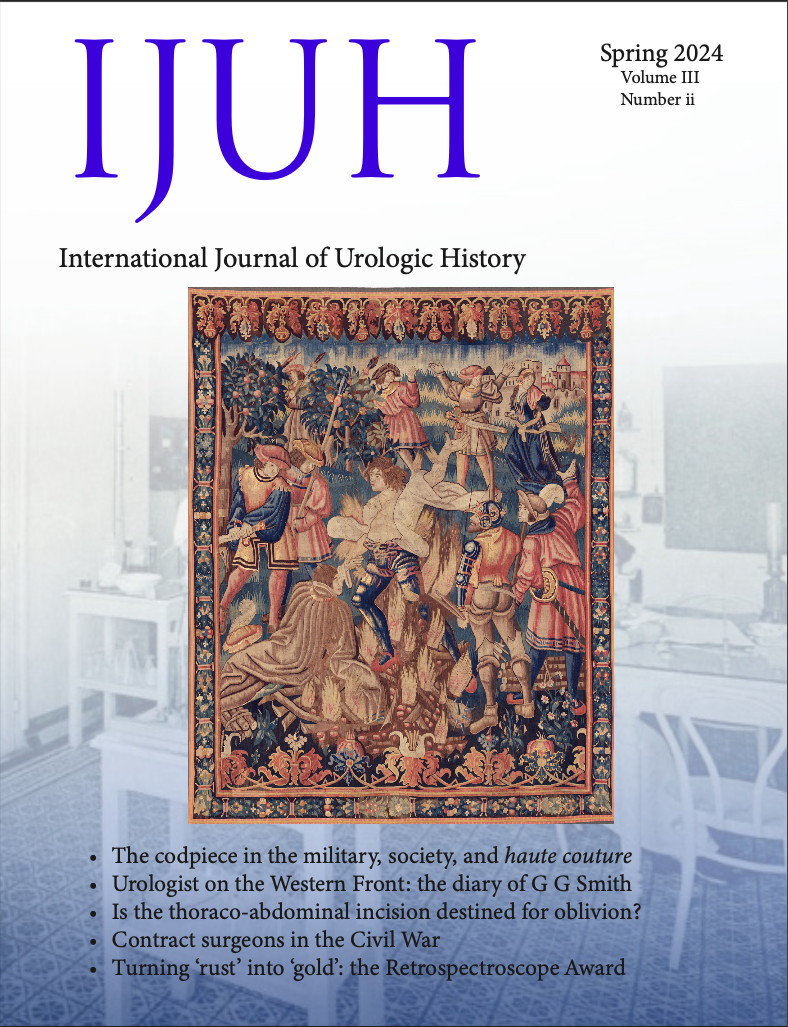IJUH
International Journal of Urologic History
The Evolution of the Management of Male Stress Urinary Incontinence
Karen M Doersch, Michael Witthaus, Gareth Warren, Ronald Rabinowitz, Divya Ajay
First Published: Jan. 15, 2022
DOI: 10.53101/IJUH.1.2.1152201
Download PDF
Abstract
Objectives
The struggle to treat male stress urinary incontinence (SUI) dates back centuries, with descriptions of male urinary incontinence (UI) in Egyptian manuscripts as early as 1500 BCE. In this review, we chronicle the history of male SUI interventions that have educated the modern options available today.
Methods
A comprehensive literature review was performed to elucidate relevant historical and clinical information. We used PubMed to identify contemporary medical literature at www.ncbi.nlm.nih.gov and JSTOR, the digital library, to access archived, older texts at www.jstor.org.
Results
French surgeon Ambroise Paré is credited with developing the first portable urinals in 1564, which was quickly followed by Hildanus developing the condom catheter and penile clamp in the 1600s. The first documented compression device was developed by Lorenz Heister in 1747. Two hundred years later, Frederic Foley created a urinary sphincter and in 1973, F. Brantley Scott created the first multi-component artificial urinary sphincter (AUS). In the 1960s and 1970s, mesh implants were fraught with complications, including urethral erosion, fistulas, and pain. More recently, the transobturator male sling, which came to market during the 2000s, has become an option for select men.
Conclusions
The modern devices we use for the treatment of male UI are evolutionary byproducts of centuries of experimental designs by pioneering surgeons from around the world. While the materials have improved, barrier, storage devices and bulking agents almost identical to the versions first invented remain in use today.
Editor in Chief: John L. Phillips, MD
Journal Design: Akhil A. Saji, MD
DOI: 10.53101
US ISSN: 2769-2183
